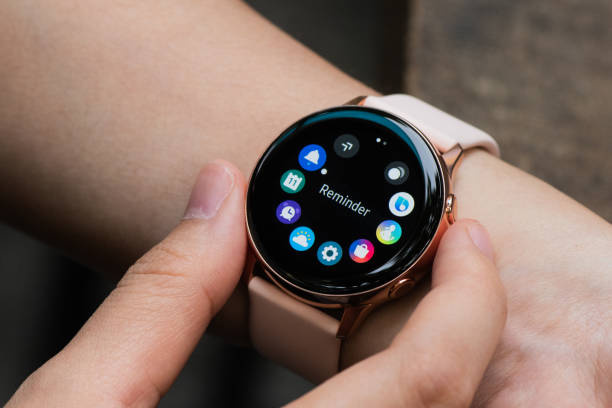Classic Watch VS Smartwatch: Which Is More Valuable and Profitable?
In today’s fast-paced world, technology has revolutionized almost every aspect of our lives, and the realm of timekeeping is no exception. While the classic wristwatch has remained a symbol of elegance, craftsmanship, and tradition, the smartwatch has emerged as a multi-functional device offering a wide range of features beyond simple timekeeping. These two types of timepieces—classic watches and smartwatches—serve different purposes, attract different types of consumers, and are valued and marketed in distinct ways.
- Defining the Classic Watch and Smartwatch
- The Evolution of Timekeeping Devices
- Comparing Functionality: Classic Watch vs. Smartwatch
- Value Retention: Classic Watches as Investments
- Market Trends: Consumer Preferences and Demand
- Profitability: Production Costs and Revenue Potential
- Conclusion: Which Is More Valuable and Profitable?

Defining the Classic Watch and Smartwatch
- Classic Watch
A classic watch, also referred to as an analog or traditional wristwatch, primarily tells time. These watches typically feature a mechanical or quartz movement, with minimal to no digital technology. The essence of a classic watch lies in its craftsmanship, design, and materials. Iconic brands such as Rolex, Patek Philippe, Omega, and Audemars Piguet are well-known for producing high-quality timepieces, often with intricate designs, fine materials, and movement mechanisms. For many collectors, these watches are not just timepieces but also an investment, as some rare models can appreciate significantly in value over time.

- Smartwatch
On the other hand, a smartwatch is a modern, digital timepiece that goes beyond telling the time. It is typically equipped with an array of sensors, including heart rate monitors, GPS, and accelerometers. It integrates with a smartphone or other devices to provide functionalities like fitness tracking, notifications, music control, GPS navigation, and even payment systems. Popular brands in this category include Apple, Samsung, Garmin, Fitbit, and Huawei. Unlike classic watches, which are typically powered by mechanical or battery-powered movements, smartwatches rely on rechargeable lithium-ion batteries and offer a array of technological features.

The Evolution of Timekeeping Devices
- Classic Watches: A Legacy of Craftsmanship
The tradition of wearing wristwatches dates back to the late 19th century, with the Swiss being at the forefront of mechanical timepiece innovation. Classic watches have always been more than mere instruments for measuring time; they are often seen as pieces of art, symbols of social status, and representations of cultural heritage. High-end watchmakers continue to rely on centuries-old techniques and skilled craftsmanship, sometimes even creating timepieces with intricate movements that can take years to perfect.
- The Rise of Smartwatches
Smartwatches, by contrast, are a product of the digital revolution. The first commercially available smartwatches emerged in the early 2000s, but it was not until the launch of the Apple Watch in 2015 that the category gained widespread attention. Today, smartwatches have evolved rapidly, integrating features such as heart rate monitoring, sleep tracking, voice assistants, and even health diagnostics. They have quickly become ubiquitous, especially among younger consumers and those looking for a device that offers much more than timekeeping.

Comparing Functionality: Classic Watch vs. Smartwatch
- Timekeeping and Design
At its core, both a classic watch and a smartwatch are designed to help you keep track of time, but they do so in fundamentally different ways. A classic watch focuses on craftsmanship, design, and elegance. High-end models often feature beautifully crafted dials, intricate movements, and materials like gold, platinum, diamonds, and ceramics. In addition, classic watches have a timeless appeal and are often seen as a symbol of refinement.
Smartwatches, by contrast, prioritize functionality over design. While the design of many smartwatches is sleek and modern, it is generally not as refined as that of luxury mechanical watches. Smartwatches offer the added advantage of features like digital displays, customizable watch faces, and the ability to synchronize with your smartphone, allowing for seamless integration into your digital life.

- Additional Features
The most significant advantage of a smartwatch is its wide range of features. Smartwatches often include:
- Health & Fitness Tracking: Monitoring heart rate, sleep patterns, steps, workouts, and more.
- Connectivity: Receiving notifications, making calls, sending messages, and syncing with various apps.
- Navigation: GPS functionality and real-time directions.
- Payment Systems: Some smartwatches allow you to make contactless payments.
- Entertainment: Streaming music, podcasts, and media directly from the watch.
Classic watches, on the other hand, remain focused on timekeeping and may offer additional complications, like clocks, date displays, or moon phase indicators, but they don't have the same level of technological functionality.
- Battery Life
Classic watches, particularly quartz models, can last for months or even years on a single battery. Mechanical watches can last a lifetime, with regular servicing and maintenance. In contrast, smartwatches are dependent on rechargeable batteries, typically requiring daily or weekly charging. While some high-end smartwatches can last up to 2–3 days on a single charge, the battery life is still one of the drawbacks compared to the longevity of classic watches.
Value Retention: Classic Watches as Investments
One of the defining features of classic watches, especially high-end models, is their ability to retain or even increase in value over time. Brands like Rolex, Patek Philippe, and Audemars Piguet produce watches that are not only status symbols but also investment pieces. For example, limited-edition models or watches made with rare materials can appreciate, sometimes outpacing the stock market.
The value retention of classic watches is influenced by factors such as:
- Brand Reputation: Well-established watchmakers have a long history of producing quality timepieces that maintain value.
- Rarity: Limited edition or discontinued models are often worth more.
- Condition: A well-maintained watch in its original packaging is more valuable than a heavily worn one.
- Heritage: Some watches carry a rich history, increasing their desirability.
On the other hand, smartwatches do not tend to retain value. Due to their rapid technological obsolescence, a smartwatch depreciates quickly once a newer model is released. For example, an Apple Watch that costs $400 new might only fetch $100 or less in resale after a few years. The rapid pace of technological advancement means that smartwatches are more of a consumable product than an investment asset.

Market Trends: Consumer Preferences and Demand
- Classic Watches: A Niche, but Loyal Market
The market for classic watches is diverse but often centered on luxury goods and collectibles. The target demographic for high-end watches includes collectors, enthusiasts, and those who are willing to pay a premium for quality craftsmanship and heritage. While the demand for luxury watches has fluctuated with economic cycles, the growth of the secondary market for pre-owned and vintage watches has helped boost the profitability of the classic watch industry.
Moreover, the appeal of classic watches remains strong among individuals seeking to make a statement of style, sophistication, and status. The timeless nature of classic watches ensures they continue to be desirable, even as smartwatches grow in popularity.
- Smartwatches: Expanding Consumer Base
Smartwatches, on the other hand, have a broader appeal, cutting across various age groups, professions, and lifestyles. The rise in health consciousness, fitness tracking, and the demand for wearable technology has fueled the growth of the smartwatch market. In particular, the younger demographic (Millennials and Gen Z) has shown a strong preference for smartwatches due to their integration with smartphones, fitness tracking capabilities, and the growing trend of digital health and wellness.
Smartwatch manufacturers, especially Apple, have capitalized on the increasing reliance on technology, offering watches that are not only functional but also stylish and customizable. Furthermore, as smartwatches become more affordable, they are attracting a larger customer base, including individuals who may not have considered a classic watch as a viable option.

Profitability: Production Costs and Revenue Potential
- Classic Watch Profitability
The profitability of a classic watch often lies in the luxury segment. The production of high-end timepieces involves significant labor, craftsmanship, and the use of expensive materials, which all contribute to their premium pricing. However, despite the high production costs, the markup on luxury watches is substantial. Brands like Rolex and Patek Philippe are known for their exclusivity, limited production runs, and high-profit margins.
In the luxury watch market, the most profitable models are those that retain value and attract a loyal customer base. Additionally, the growing trend of vintage watches and resale markets has added another layer of profitability for collectors and investors alike.
- Smartwatch Profitability
Smartwatches are generally more affordable to produce, given their reliance on mass production, standardized components, and technology that can be sourced from various suppliers. However, the key to profitability in the smartwatch market lies in recurring sales. Unlike classic watches, which may be purchased infrequently, smartwatches require regular upgrades and replacements as technology evolves. The recurring revenue from software updates, app ecosystems, and even services like Apple’s fitness subscription plan contributes to the overall profitability of smartwatch brands.
The profitability of smartwatch companies is also driven by the sheer volume of sales. For instance, Apple, Samsung, and other major players ship millions of smartwatches annually, creating substantial revenue. Even though the margins on individual smartwatches might be lower compared to luxury timepieces, the scale of the smartwatch market ensures that they are highly profitable in terms of overall revenue

Conclusion: Which Is More Valuable and Profitable?
The answer to whether classic watches or smartwatches are more valuable and profitable depends on the lens through which you view them.
- For value retention and long-term investment potential, classic watches (especially luxury and limited-edition models) stand out. The ability of certain timepieces to appreciate over time makes them a unique asset class, blending craftsmanship with financial returns.
- For functionality and mass-market appeal**, smartwatches win hands down. With their integration of modern technology, smartwatches provide a range of functionalities that extend far beyond the capabilities of traditional watches. They cater to a much wider demographic, making them a more profitable product in terms of annual sales volume.
Ultimately, whether a classic watch or smartwatch is more valuable and profitable depends on individual preferences. If you’re seeking a blend of tradition, luxury, and investment potential, the classic watch remains the superior choice. However, if you prioritize functionality, cutting-edge technology, and the convenience of a multi-purpose device, the smartwatch holds a clear advantage.
For watch brands, there is no one-size-fits-all solution each has its place in the market, and the future of both may evolve in ways we cannot yet predict. What is clear, however, is that both classic watches and smartwatches have carved out distinct niches, ensuring that timepieces of all kinds continue to hold relevance in a rapidly changing world.




